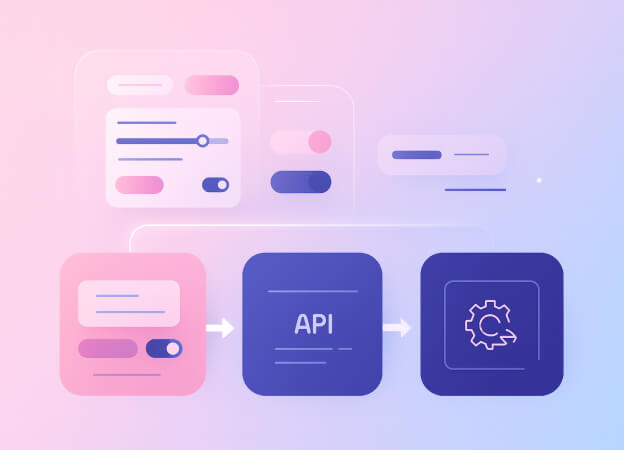In software testing, the way you design your test cases is just as important as running them. Test case design techniques are structured approaches used to create effective test cases.
The main goal is to get complete test coverage. We want to keep the number of test cases manageable. This will save time, effort, and money during manual testing and test automation.
Well-designed test cases help testers identify:
- Test input data (what values should be tested)
- Expected outputs
- Test conditions and scenarios
- The steps needed to validate the system’s behavior in different situations.
Test case design techniques are generally grouped into three categories:
- Black Box Testing Techniques: Focus on functionality, without looking at code.
- White Box Testing Techniques: Focus on the internal structure and logic of the code.
- Experience-Based Techniques: Rely on the knowledge, intuition, and creativity of testers.
By learning when and how to use these techniques, testers can make better test cases. They can also improve test coverage and lower the risk of defects reaching production.
Black Box Testing Techniques
Black Box Testing Techniques focus on verifying the functionality of a system without looking at its internal code. Instead of examining how the software is built, testers design test cases from the requirements, specifications, and expected behavior of the application.
These techniques are widely used in system testing, acceptance testing, and regression testing, because they closely mirror real user interactions. The goal is to validate whether the software behaves correctly for a variety of test scenarios and input data.
Below are the most common test case design techniques used in black box testing.
Equivalence Partitioning (EP)
Equivalence Partitioning (EP) is a test case design method that divides the input domain into groups, or equivalence classes. The principle is simple: if one test case from a class works (or fails), all the other values in that class are expected to behave the same way.
This makes test case creation more efficient by reducing the number of tests while maintaining good test coverage criteria.
Example: Consider a field that accepts ages between 18 and 60. Instead of testing every possible age, you test just one value from each partition:
- Valid inputs: any number between 18 and 60.
- Invalid inputs: values below 18, or above 60.
The table below illustrates how these partitions translate into test input data:
| Equivalence Class | Description | Test Cases |
|---|---|---|
| Valid | Age between 18 and 60 | 18, 35, 60 |
| Invalid (Below) | Age less than 18 | 17, 0 |
| Invalid (Above) | Age greater than 60 | 61, 100 |
Boundary Value Analysis (BVA)
Boundary Value Analysis (BVA) is a black box testing technique that focuses on the edges of input ranges, the places where defects are most often found. Rather than testing values deep inside a range, BVA checks just below, at, and just above the limits.
This technique is often used alongside Equivalence Partitioning to strengthen test coverage.
Example: Using the same age field (18–60):
- Test the minimum valid value: 18
- Test just below: 17
- Test the maximum valid value: 60
- Test just above: 61
The table below shows how boundary conditions are mapped to test cases:
| Boundary Value | Description | Test Cases |
|---|---|---|
| Valid (Lower) | Minimum valid age | 18 |
| Invalid (Lower) | Just below minimum valid age | 17 |
| Valid (Upper) | Maximum valid age | 60 |
| Invalid (Upper) | Just above maximum valid age | 61 |
Decision Table Testing
Decision Table Testing is used when system behavior depends on multiple conditions or business rules. It provides a structured way to capture all possible input combinations and their expected outputs in a tabular form.
This is especially useful when the logic is complex and there’s a risk of missing some rule combinations.
Example: A system applies discounts based on customer type and purchase amount. The decision table ensures every possible combination of conditions is tested:
- Condition 1: Customer type (new / existing).
- Condition 2: Purchase amount (≥ $100 or < $100).
- Actions: Apply 10% discount, apply 5% discount, or no discount.
The decision table below maps these rules into clear test scenarios:
| Conditions | Rule 1 | Rule 2 | Rule 3 | Rule 4 |
|---|---|---|---|---|
| Customer Type: New | Yes | Yes | No | No |
| Purchase Amount: ≥ $100 | Yes | No | Yes | No |
| Actions | ||||
| Apply 10% Discount | X | X | ||
| Apply 5% Discount | X | X | ||
State Transition Testing
State Transition Testing is a black box testing technique used when the system’s behavior changes depending on its current state and events. Testers design cases to validate both valid and invalid transitions.
This method is valuable for testing workflows, protocols, and user interfaces where one action leads to a new state.
Example: In a login system, a user is locked out after three consecutive failed login attempts. Tests would check transitions between states like:
- Logged out → Logged in (valid password)
- Logged out → Failed login attempt
- Failed login attempts → Account locked
A state diagram or transition table can be used to design these test cases.
Use Case Testing
Use Case Testing builds test cases directly from use cases, which describe how users interact with the system to achieve specific goals. Each use case is converted into a test scenario, making this technique ideal for end-to-end testing.
This ensures the system supports real-world user needs, making it especially valuable in acceptance testing.
Example: An e-commerce application might include a use case for checkout. The test case would follow the user journey step by step:
- Add items to the cart
- Enter payment details
- Confirm the order
- Receive confirmation message
This approach validates that the system works from the user’s perspective, not just in isolated functions.
White Box Testing Techniques
White Box Testing Techniques, also called structural testing or glass-box testing, look at the code's internal structure and logic. Unlike black box methods, testers can see the code in white box testing. This type of testing needs knowledge of programming and system design.
The goal is to design test cases that ensure all parts of the code have been executed and validated. This improves test coverage criteria, uncovers hidden defects, and ensures code reliability.
White box testing is often used in unit testing, integration testing, and test automation. It requires clear visibility of the code.
Statement Coverage Testing
Statement Coverage Testing ensures that every statement in the code executes at least once during testing.
- Why use it? Detects dead code, unexecuted lines, and missing logic.
- Limitations: Even if 100% statement coverage is achieved, some logical errors may still go undetected.
Example:
if age >= 18: print("Eligible") print("Done")
A single test with age = 20 would execute both statements, satisfying statement coverage.
Decision Testing Coverage (Branch Coverage)
Decision Testing Coverage, also called Branch Coverage, verifies that every possible branch (true/false decision) is executed at least once.
- Why use it? Ensures that all branches of conditional logic are tested.
- Example: For an if-else statement, both the “if” and “else” paths must be tested.
Example:
if age >= 18: print("Eligible") else: print("Not Eligible")
Test with age = 20 covers the “if” branch.
Test with age = 15 covers the “else” branch.
Condition and Multiple Condition Testing
In Condition Testing, each individual condition within a decision is tested for both true and false outcomes.
InMultiple Condition Testing, all possible combinations of conditions in a decision are evaluated.
- Why use it?Provides deeper coverage than branch testing, especially when multiple Boolean conditions are involved.
Example
if (income > 50000 and credit_score > 700): print("Loan Approved")
Here:
- Test income high, credit score high (both true).
- Test income high, credit score low.
- Test income low, credit score high.
- Test income low, credit score low.
This ensures all paths are validated.
Conclusion
Getting test case design right makes all the difference in software quality. The teams we work with at [A] know that there's no one-size-fits-all approach, what matters is finding the techniques that actually work for your specific situation and business needs. We've seen how proper test case planning, combined with solid execution practices and the right testing environments, helps development teams catch issues before they reach users.
The reality is that in today's rapid release cycles, good testing isn't just about finding bugs anymore. It's about giving your team and your users confidence that the software actually does what it's supposed to do. When you get the fundamentals right, whether that's through our structured methodology or just better planning overall, shipping reliable software becomes much less stressful.




